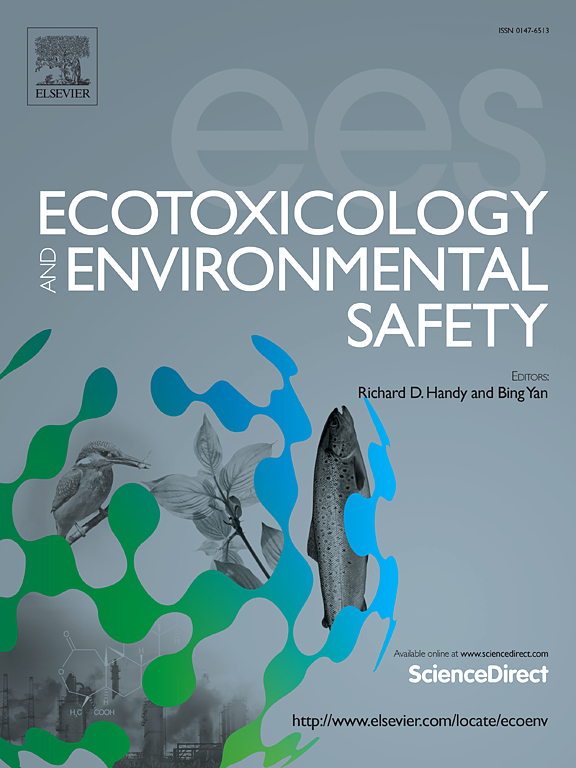Multi-omics insights into antioxidant and immune responses in Penaeus monodon under ammonia-N, low salinity, and combined stress
IF 6.1
2区 环境科学与生态学
Q1 ENVIRONMENTAL SCIENCES
引用次数: 0
Abstract
Ammonia nitrogen and salinity are critical environmental factors that significantly impact marine organisms and present substantial threats to Penaeus monodon species within aquaculture systems. This study utilized a comprehensive multi-omics approach, encompassing transcriptomics, metabolomics, and gut microbiome analysis, to systematically examine the biological responses of shrimp subjected to low salinity, ammonia nitrogen stress, and their combined conditions. Metabolomic analysis demonstrated that exposure to ammonia nitrogen stress markedly influenced the concentrations of antioxidant-related metabolites, such as glutathione, suggesting that shrimp mitigate oxidative stress by augmenting their antioxidant capacity. The transcriptomic analysis revealed an upregulation of genes linked to energy metabolism and immune responses and antioxidant enzymes. Concurrently, gut microbiome analysis demonstrated that ammonia nitrogen stress resulted in a marked increase in Vibrio populations and a significant decrease in Photobacterium, indicating that alterations in microbial community structure are intricately associated with the shrimp stress response. A comprehensive analysis further indicated that the combined stressors of ammonia nitrogen and salinity exert a synergistic effect on the immune function and physiological homeostasis of shrimp by modulating antioxidant metabolic pathways and gut microbial communities. These findings provide critical systematic data for elucidating the mechanisms through which ammonia nitrogen and salinity influence marine ecosystems, offering substantial implications for environmental protection and ecological management.
单对虾在氨氮、低盐度和综合胁迫下的抗氧化和免疫反应的多组学研究
氨氮和盐度是影响海洋生物的关键环境因素,对养殖系统中的单对虾物种构成重大威胁。本研究采用综合多组学方法,包括转录组学、代谢组学和肠道微生物组学分析,系统地研究了对虾在低盐度、氨氮胁迫及其联合条件下的生物学反应。代谢组学分析表明,暴露于氨氮胁迫显著影响抗氧化相关代谢物(如谷胱甘肽)的浓度,表明虾通过增强抗氧化能力来减轻氧化应激。转录组学分析显示,与能量代谢、免疫反应和抗氧化酶相关的基因上调。同时,肠道微生物组分析表明,氨氮胁迫导致弧菌数量显著增加,光杆菌数量显著减少,这表明微生物群落结构的改变与对虾的应激反应有着复杂的关系。综合分析进一步表明,氨氮和盐度联合应激源通过调节抗氧化代谢途径和肠道微生物群落,对对虾的免疫功能和生理稳态产生协同效应。这些发现为阐明氨氮和盐度影响海洋生态系统的机制提供了重要的系统数据,对环境保护和生态管理具有重要意义。
本文章由计算机程序翻译,如有差异,请以英文原文为准。
求助全文
约1分钟内获得全文
求助全文
来源期刊
CiteScore
12.10
自引率
5.90%
发文量
1234
审稿时长
88 days
期刊介绍:
Ecotoxicology and Environmental Safety is a multi-disciplinary journal that focuses on understanding the exposure and effects of environmental contamination on organisms including human health. The scope of the journal covers three main themes. The topics within these themes, indicated below, include (but are not limited to) the following: Ecotoxicology、Environmental Chemistry、Environmental Safety etc.

 求助内容:
求助内容: 应助结果提醒方式:
应助结果提醒方式:


